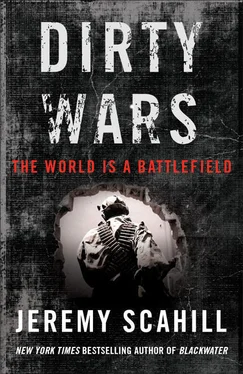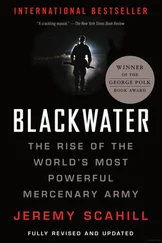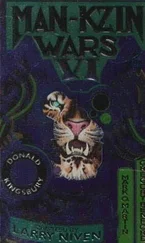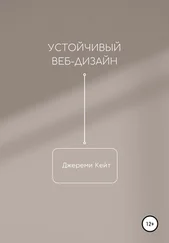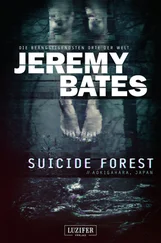Another source of torture at NAMA was that members of the HVT Task Force responsible for hunting people would continue to have access to the prisoners they seized. According to Major General Miller, at times the task force at NAMA would use special operators as interrogators. That created scenarios where the rage from the battlefield would spill over into interrogations, even after the prisoner was disarmed and in custody. Malcolm Nance, the former SERE instructor, told me, “Captives captured on the battlefield, first thing you’re going to learn is the guy that is capturing you is going to be very upset that you just lost the fire fight to him, and you killed some of his buddies so be prepared for having an ass whipping. It’s just that simple.” It becomes even worse when the soldiers who did the assault then have access to those prisoners for days on end. “It’s army doctrine that when you take a prisoner, one of the things you do is secure that prisoner and then you speed him to the rear. You get him out of the hands of the unit that took him,” recalled an army officer of his experience at a different filtration site. “Well, we didn’t do that. We’d keep them at our holding facility for I think it was up to seventy-two hours. Then we would place him under the guard of soldiers he had just been trying to kill.” The officer described one such incident where a detainee who was suspected of having killed a US soldier had his leg whacked by one of the soldier’s comrades with a baseball bat.
Perry recalled an incident soon after he arrived at NAMA involving an alleged financier of Zarqawi who was taken to the camp. The man was allegedly refusing to give any information to his interrogators. “I had no part in this interrogation, I was just observing….There was kind of a garden-like area with dirt and mud and a hose out there,” Perry recalled, adding:
He was stripped naked, put in the mud and sprayed with the hose, with very cold hoses, in February. At night it was very cold. They sprayed the cold hose and he was completely naked in the mud, you know, and everything. [Then] he was taken out of the mud and put next to an air conditioner. It was extremely cold, freezing, and he was put back in the mud and sprayed. This happened all night. Everybody knew about it. People walked in, the sergeant major and so forth, everybody knew what was going on, and I was just one of them, kind of walking back and forth seeing [that] this is how they do things.
Perry also recalled watching a British SAS officer—not authorized to conduct any kind of interrogation—mercilessly beat a detainee until he and another soldier intervened. As early as the summer of 2003, the CIA’s Baghdad Station was complaining to Langley that Special Operations troops were being too aggressive with detainees. The CIA’s general counsel, Scott Muller, said that the techniques being used at NAMA were “more aggressive” than those the CIA was using.
The task force would fly new detainees to NAMA using unmarked helicopters. The prisoners were clad in blue jumpsuits, and during their journey, they would have blacked-out goggles placed over their eyes. Interrogators at NAMA used an “authorization template” on their computers to check off which harsh interrogation techniques they intended to use on detainees. The request to use harsh interrogation would, in theory, need approval from higher-ups. “I never saw a sheet that wasn’t signed. It would be signed off by the commander, whoever that was,” recalled Perry. “He would sign off on that every time it was done.” Another interrogator added that “every harsh interrogation [was] approved by the J2 [the unit’s chief intelligence officer] of the TF and the Medical prior to its execution.” Perry continued: “Some interrogators would go and use these techniques without typing up one of those things just because it was a hassle, or he didn’t want to do it and knew it was going to be approved anyway, and you’re not gonna get in that much trouble if you get caught doing one of these things without a signature.”
When Perry and a handful of colleagues began expressing their discomfort with the events at NAMA to their commanders, those commanders would call in military Judge Advocate General’s Corps (JAG) lawyers, who lectured the dissenters on the distinction between unlawful enemy combatants and POWs, and the legal loopholes therein. “Within a couple hours a team of two JAG officers, JAG lawyers, came and gave us a couple hours slide show on why this is necessary, why this is legal, they’re enemy combatants, they’re not POWs, and so we can do all this stuff to them and so forth,” Perry recalled. “I mean they had this two hour slide show all prepared, and they came in and gave it to us and they stopped interrogations for it. It was a PowerPoint.” The lawyers, Perry alleged, said that “we didn’t have to abide by the Geneva Conventions, because these people weren’t POWs.” Perry said he thought the lawyers “just came in and said whatever they had to say to patch it up and continue with the war.”
All task force personnel were required to sign nondisclosure agreements. Interrogators were often told that the White House and Rumsfeld were watching their operations closely. Perry stated that he saw McChrystal at NAMA on more than one occasion. The personnel at NAMA, he alleged, were given the impression that the techniques had been approved from on high because they “were only like a few steps away in the chain of command from the Pentagon.” The task force commanders, he said, would tell the interrogators that the White House or Pentagon had been directly briefed on their progress, particularly when it came to intel on Zarqawi. The commanders would tell them: “Rumsfeld was informed, such and such a report is on Rumsfeld’s desk this morning, read by Secdef.” He added, “It’s a big morale booster for people working 14 hour days. Hey, we got to the White House!” Malcolm Nance told me, “When you have the President of the United States setting the pace, well you’re gonna get Abu Ghraib, you are going to get abuse. You’ve got the intelligence community throwing the book out to the point where, in their world, no one was ever subjected to ‘abuse’ by the US Armed Forces.”
Major General Keith Dayton, the commander of the Iraq Survey Group, which was established in June 2003 to coordinate the hunt for WMDs, described the situation at NAMA as “a disaster waiting to happen,” warning the Pentagon’s inspector general that he needed to “slam some rules on this place right away to basically keep ourselves from getting in trouble and make sure these people are treated properly.” Dayton described cases of prisoners transferred to conventional military custody from the task force with signs of being “badly burned,” having two black eyes, “back almost broken,” “multiple contusions on his face.” Soldiers and personnel from Camp Cropper (near Camp NAMA) stated under oath that detainees arrested and interrogated by the task force and SEAL Team 5 had been delivered to Camp Cropper showing obvious signs of abuse.
There are at least two known cases of Iraqis dying immediately after being transferred from the custody of task force Navy SEAL commandos. After what a SEAL team described as a “struggle,” on April 5, 2004, the SEALs delivered prisoner Fashad Mohammad to a conventional base, where he was interrogated and then allowed to sleep, at which point he became unresponsive and later died. The medical examiner’s report on his death, which was released under the Freedom of Information Act, said that Mohammad “died in U.S. custody approximately 72 hours after being apprehended. By report, physical force was required during his initial apprehension during a raid. During his confinement, he was hooded, sleep deprived, and subjected to hot and cold environmental conditions, including the use of cold water on his body and hood.” Although the report described “multiple minor injuries, abrasions and contusions” and “blunt force trauma and positional asphyxia,” it concluded that the cause of death was “undetermined.” On November 4, 2003, Manadel al Jamadi died at Abu Ghraib prison, amid allegations that he had been beaten to death by members of SEAL Team 7. One team member was court-martialed but was ultimately acquitted—and nobody was charged with homicide.
Читать дальше
